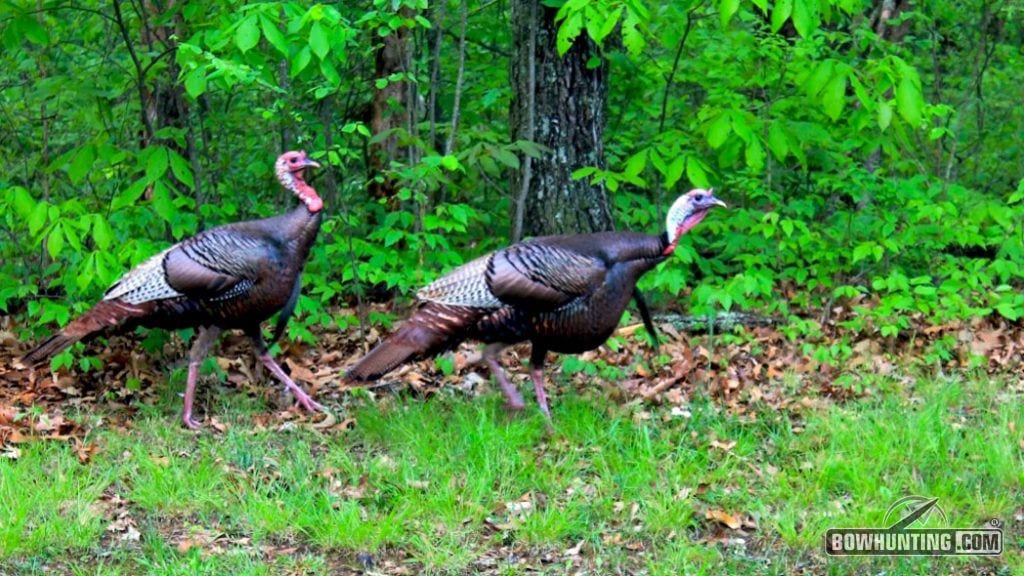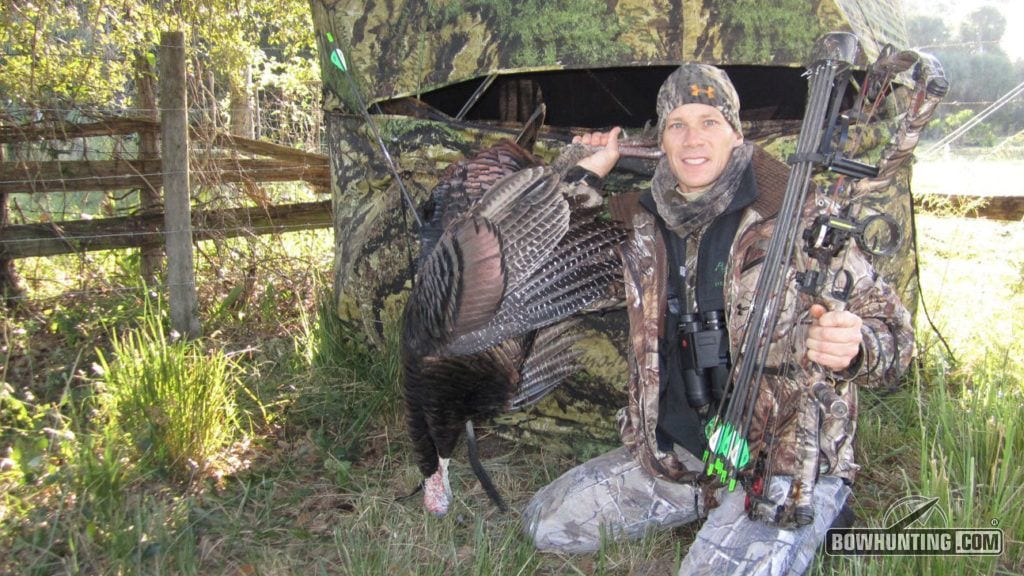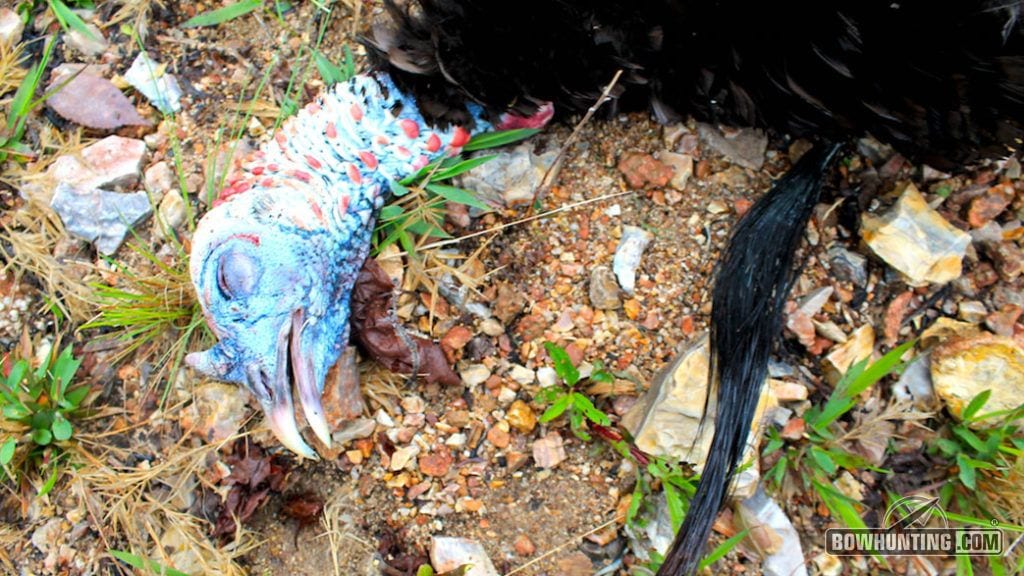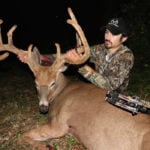Wild turkeys have very small brains. That said, they have an uncanny ability to whip turkey hunters’ behinds every spring. That says something about turkeys. They might have brains the size of a pea, but they use it pretty well. There are seven turkey hunting secrets you need to know. Master these and you’ll no doubt find greater success with each spring season.
Some of the following tips can be used to further your efforts to kill a big turkey. And I guarantee ol’ tom doesn’t want you finding out about them. Some of them are just cool tips. Regardless, check out these seven lesser-known facts about the great American wild turkey.
-
TAG-TEAMING WORKS
You’ve got a bird that doesn’t want to work those last 150 yards. For whatever reason, it’s hung up and isn’t coming any closer. You’ve changed calls. Changed setups. Changed decoys. Doesn’t matter. It’ll answer every call, but that bird ain’t coming any closer.
Stick your calls in the turkey vest and have a buddy call for you. Have him start out where you are. Then, he or she should gradually work away from you, getting further and further from the bird. Once the caller is about 75 to 100 yards behind you, have them anchor down for a few minutes and not change location. That might prove enough to coax that bird the rest of the way in. If that doesn’t work, the caller should start swinging left and right. If the bird moves right, the caller should move left. If the bird moves left, the caller should move right. Oftentimes, the bird will work a little closer with each pass. It doesn’t always work, but it does a lot of the time.

Want to pull a double on turkeys? Then try double-teaming them with a buddy for greater success.
-
PLAYING HARD TO GET KILLS GOBBLERS
You don’t have to call aggressively to get birds to commit. A lot of those birds that don’t come in would if you just played hard to get. Old gobblers are like us in a way, they like it when their better half plays hard to get.
First off, don’t give up on gobblers that suddenly go silent. That sometimes means they’ve broke and are coming in to your setup. But for those that don’t and just keep gobbling, go silent on them. That sudden ceasefire of hen vocalizations can trigger a reaction from gobblers that sends them into a panic. They might think that hen finally had enough, is going away, and therefore the tom will sometimes come running to intercept it. Only to be intercepted by you.
-
FIGHTING PURRS PERFORM
This is one call that very few hunters use. And I’ve never really understood why. It’s a killer tactic. Literally.
Fighting purrs are obviously used by turkeys in fights. It’s a turkey sound they use a lot. It only makes sense to use it in your calling sequences, too. Turkeys aren’t as conditioned to this tactic because hunters don’t use it very often. I’d venture to say if you use it, you’ll be the only one around who does. It’s highly likely none of your neighbors will.

There are seven turkeys secrets you should know. Master these and you’ll punch more tags.
-
GOBBLING IS KILLER
Here’s another tactic that few hunters use. Instead, it stays stowed away in hunters’ backpack. That’s a mistake. Kill more birds by gobbling to them. If a tom shuts up for a while, and it doesn’t come in, gobble at it. That’ll often get the bird worked back up if it senses another tom is working against it.
Diaphragm (mouth), tube, and box calls all perform this sound well. Learn to gobble on at least one of

Do you have what it takes to consistently kill turkeys with a bow? Put these turkey secrets to work on your next hunt and walk out with more than just decoys.
them and implement that tactic this spring. It’ll pay off in filled tags.
-
BODY LANGUAGE IS EVERYTHING
Paying attention to how gobblers communicate physically, not just audibly. The way a turkey acts via body language is very important. Being able to read body language and interpret it is very useful to a turkey hunter. Those that don’t know how to do that are at a serious disadvantage.
For example, if a bird suddenly folds its wings and gives them a quick “flip and tuck,” it’s game over. That bird is leaving. Another example: Birds strut from the tail feathers to the neck. What do I mean by that? As a bird goes into strut, feathers start to raise on the lower back, and gradually move upward as the bird goes further into strut. A bird that isn’t real sure of the situation will stay in quarter strut or half strut. A bird that is very sure of the situation will go into full strut.
The list of body language goes on. The changing color of the head, the meaning behind gobbling as it walks away, and the list goes on. Knowing how to read these things and the meaning behind them help tag more turkeys.
-
DROPPINGS TELL THE SEX AND AGE OF BIRDS
That’s right. You can tell everything you need to know about that bird you’re after by the postpartum crickets it had yesterday for breakfast. Male turkeys have elongated droppings. They’ll also be hooked on the end, often forming an L or J shape. Hens are different. They have spiral-shaped droppings. These droppings often take the form of popcorn.

We often have to go against everything we’ve ever been told or taught about wild turkeys. Success comes when you start outsmarting the pea-brained wild turkey.
-
THE HENS GO TO THE TOMS
Most hunters I talk to believe that toms go to hens more often than the hens go to the toms. That’s simply not true. Hens more often go to the toms. I know, it goes against every fiber of your being to believe this. Trust me when I say it took some time for me to believe it. But once I did, it completely changed how I hunted turkeys.
I don’t try to “force” gobblers to come to where I want them to anymore. I try to get where I think that gobbler wants to go or where I feel the hens will be. More often than that, though, I go to the toms. Sure. It’s aggressive. It’s risky. You’ll bump some birds. But belly-crawling, fanning birds (safely), using terrain to get closer, and other similar tactics work extremely well. Get within 100 yards of that bird. Then set up and call it the rest of the way in if you so choose.
BONUS: HENS STRUT AND GOBBLE, TOO
This one won’t help you kill a turkey. But knowing about it will keep you from killing a hen on accident. Don’t believe me that hens can gobble and strut, too? Go YouTube it. I dare ya. For real, though. It’s extremely rare, but hens can strut. And I’ve even seen a hen gobble. Pay attention to the bird you line the sites up on. A hen that struts—especially a bearded one—can be easy to pass off as a gobbler at longer distances in the heat of the moment. Slowing down and being completely aware of your target before you shoot will keep you from pulling the trigger on something you don’t necessarily want or need to.

 By
By 



